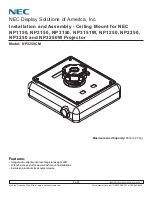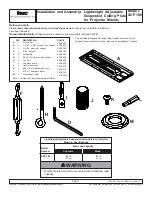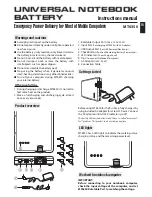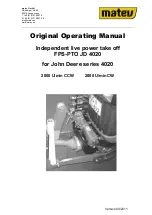
1 2 . T u n e r
V C R has a T V tuner a n d a n a n t e n n a selector for record
ing a T V p r o g r a m a n d an R F converter for putting o u t
T V signal. With the tuner, it is possible t o view a p r o g r a m
while recording a n o t h e r . The input signal can b e p u t o u t
t o the V I D E O O U T terminal directly, after m o d u l a t i o n
a n d demodulation, or after recording a n d playback. Hi-fi
V C R equips a multisound decoder a n d generally employs
split-carrier system t o achieve hi-fi sound reproduction. It
also has a synthesizer-channel-presetter for easy channel
presetting, microcomputer controlling and timer-activated
recording.
^Split-carrier system: Sound signal is separated from pic
ture signal before video demodulation. Unlike the inter-
carrier system, which separates sound signal after the/
demodulation, this system provides hi-fi sound by sup
pressing video signal interference.
UHF ant.
UHF out
VHF ant.
UHF j
distributor
I
VHF out
T
distributor
j
Front
End
Video
IF
RF
Modulator
Modulator
Audio
IF
Video
' Audio
Fig. 3 3 Antenna Selector
1 3 . V i d e o C a m e r a
T h e image coming t h r o u g h the lens is focused o n a p h o t o
electric device. The light information transduced into elec
tric one is scanned line by line in t h e same way as T V
receivers d o . There are several kinds in the photo-electric
device, camera tube a n d solid imagers.
1 4 . 1 / 2 " Hi-fi V C R
1/2 hi-fi V C R has a n additional audio recording system
t o the conventional system. Therefore, dubbing or su
perimposing completely independent 2-channel audio sig
nals on the audio tracks is possible while recording a video
p r o g r a m .
The V C R ' s conventional audio recording system sacrifices
sound quality because the audio head is stationary and the
tape-to-head velocity is low. Hi-fi VCRs have solved t h e
problem by recording audio signal t h r o u g h rotating heads
which m a k e t h e tape-to-head velocity high.
1 4 . 1 0 Hi-fi ( N T S C only)
14.1.1 Standard
p
Hi-fi
13 Hi-fi system records audio signal o n t h e diagonal video
tracks together with video signal. It shifts the Y-carrier u p
by 400kHz a n d inserts four separate F M audio carriers be- /
tween the C- and Y-signals in the frequency spectrum. Two
carriers 1.38MHz fi (LA) a n d 1.68MHz fs (RA) a r e
recorded at a time through the A-video-head and 1.53MHz
f2 (LB) a n d 1.83MHz U (RB) t h r o u g h t h e B-video-head.
Cross-talk c a n be suppressed because of their frequency
difference. The audio tracks at the t o p can be used as ever.
Therefore, dubbing is possible o n a hi-fi VCR through the
stationary audio head. In playback, switching the picked-
up signals coming from t h e A - a n d B-heads are m a d e b e
fore or after demodulation.
1 4 . 1 . 2 Super
13
(High-band 0)
V C R ' s picture resolution depends o n t h e recording fre
quency bandwidth which depends o n the carrier frequency.
W h e n t h e carrier frequency is shifted u p by 400kHz, t h e
resolution increases by 30 lines theoretically.
The frequency b a n d w i d t h of (3 V C R is wider t h a n that of
V H S VCR because the tape-to-head velocity of the form
er is higher t h a n the latter. (3 Hi-fi h a s already shifted t h e
Y-carrier u p by 400kHz t o avoid F M audio interference.
Super (3 system shifts t h e carrier u p further 400kHz,
800kHz in t o t a l , improving t h e effective resolution by
aproximately 3 0 % compared with t h e conventional n o n -
hi-fi system.
Y signal -
C signal-
Audio -
Audio
Fig. 3 4 Recording System of
0
Hi-fi VCR
46
FM de
modulation
Dowm-
conversion
FM
de
modulation
Mixer
Video/audio head
688kHz
C
Y
3.6MHz 4.8MHz
h
A
1.38MHz(LA)
/
2
= 1.53MHz(LB)
/
3
=1.68MHz(RA)
/
4
= 1.83MHz(RB)








































